Did you know a 2006 study showed hydrocolloid pimple patches work better than skin tape1? I’ve struggled with acne and know how hard it is to find good treatments. Acne patches and benzoyl peroxide are two common options. But, it’s important to know how they work together.
Spot treatments have ingredients like benzoyl peroxide or salicylic acid to fight acne2. Pimple patches prevent picking and are less harsh than spot treatments2. Yet, Dr. Lian Mack warns against using them together to avoid irritation or burns2.
Before mixing these treatments, talk to a dermatologist or skincare expert2. They can help based on your skin type and how bad your acne is2. Knowing the pros and cons of each can help you choose the best for your skin.
Key Takeaways
- Hydrocolloid pimple patches are more effective than skin tape at reducing breakouts, redness, and oil
- Spot treatments contain active ingredients like benzoyl peroxide or salicylic acid to target acne
- Pimple patches act as a barrier and are less drying and irritating than spot treatments
- Avoid using spot treatments and pimple patches together to prevent irritation or burns
- Consult with a dermatologist to determine the best acne treatment approach for your skin type and severity
Understanding Acne Patches and Their Benefits
Acne is a common skin issue that affects almost everyone at some point3. If you’re dealing with acne, you might have heard about acne patches. These small stickers are applied directly to blemishes, offering a focused way to treat acne.
What Are Acne Patches?
Acne patches, also known as pimple patches or hydrocolloid dressings, are small stickers for pimples. They’re made of a hydrocolloid material that seals the area and absorbs excess fluid like sebum and pus4. This reduces inflammation and helps flatten the pimple3.
There are different types of acne patches, each for different blemishes. Some patches have salicylic acid for blackheads and whiteheads, or tea tree oil for its antibacterial effects34. Microneedling patches are for more severe acne3.
How Do Acne Patches Work?
Acne patches work by creating a protective barrier over the pimple. This shields it from irritants and stops picking, which can cause scarring and discoloration3. The hydrocolloid material absorbs excess fluid, helping to flatten the pimple and aid in healing4.
Studies have shown that hydrocolloid patches are more effective than surgical tape in treating mild to moderate acne5. Participants in a study saw a decrease in acne severity after using the patches for a week5. Hydrocolloid patches were better at controlling redness, oiliness, and dark pigmentation compared to surgical tape5.
Benefits of Using Acne Patches
One key benefit of acne patches is their targeted treatment for individual pimples. By applying the patch directly, you can deliver active ingredients precisely where needed, without irritating the surrounding skin.
Acne patches are also gentler than traditional spot treatments, which can be drying and irritating, especially for sensitive skin. The hydrocolloid material used in these patches is soft, breathable, and non-irritating, making them suitable for all skin types4.
Another advantage is that they prevent picking and touching, which can worsen inflammation and increase the risk of scarring and discoloration. By creating a physical barrier, these patches discourage picking and help maintain a clean, protected environment for healing4.
| Acne Patch Type | Benefits | Best For |
|---|---|---|
| Hydrocolloid | Absorbs excess fluid, flattens pimples, promotes healing | Pus-filled pimples, preventing infection |
| Salicylic Acid | Unclogs pores, reduces inflammation | Blackheads, whiteheads, preventing future breakouts |
| Tea Tree Oil | Antibacterial properties, combats environmental contaminants | Inflamed pimples, sensitive skin (patch test recommended) |
| Microneedling | Delivers active ingredients deep into the skin | Severe acne, cystic acne |
While acne patches can treat individual pimples, they may not stop future breakouts3. For ongoing or severe acne, seeing a dermatologist for a comprehensive treatment plan is best3.
Benzoyl Peroxide: A Popular Acne Treatment
I’ve struggled with acne and found benzoyl peroxide to be very effective. It’s a key ingredient in many acne treatments. It fights acne-causing bacteria and reduces swelling.
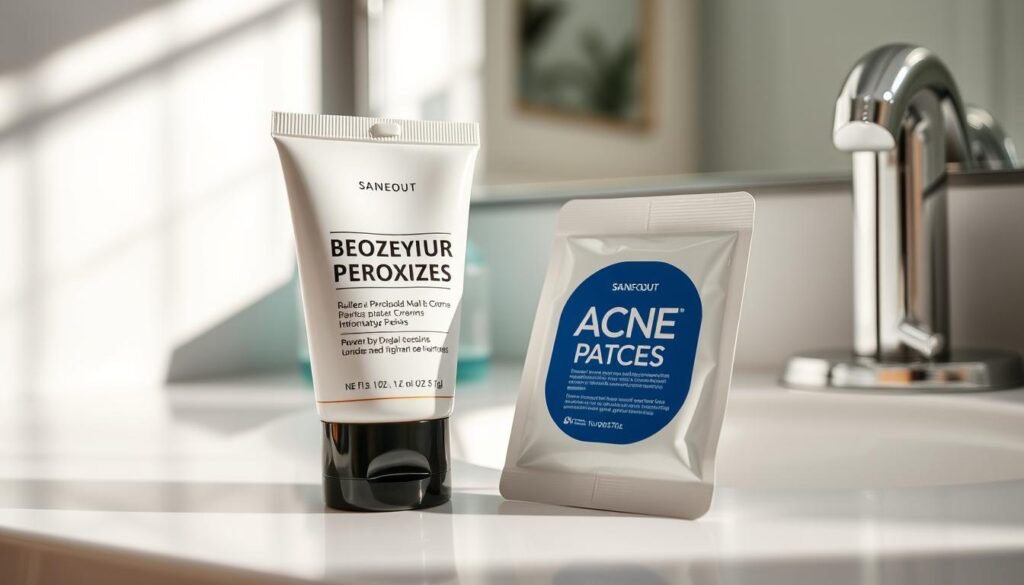
What Is Benzoyl Peroxide?
Benzoyl peroxide is a compound that fights bacteria and oxidizes. You can find it in creams, gels, and spot treatments without a prescription. It comes in strengths from 2.5% to 10%6. Surprisingly, studies show that the 2.5% strength is just as good as the higher strengths6.
How Does Benzoyl Peroxide Treat Acne?
Benzoyl peroxide goes deep into the skin to kill bacteria. It’s great at fighting the bacteria that cause acne. It also clears pores by removing dead skin and other blockages, helping to prevent future breakouts.
Another plus is that it reduces inflammation. This means it can lessen the redness and swelling of acne. Some pimple patches even include benzoyl peroxide to fight acne-causing bacteria7.
| Acne Treatment | Strengths Available | Key Benefits |
|---|---|---|
| Benzoyl Peroxide | 2.5% to 10% | Kills acne-causing bacteria, unclogs pores, reduces inflammation |
| Salicylic Acid | 0.5% to 2% | Exfoliates skin, unclogs pores, reduces inflammation |
| Adapalene (Differin) | 0.1% | Regulates skin cell turnover, unclogs pores, reduces inflammation |
While benzoyl peroxide is usually safe, some might get dry skin, irritation, or peeling. Especially when starting or using stronger formulas. It can take 2 to 3 months to see results with over-the-counter products6. If your acne doesn’t get better after 2 to 3 months, you should see a doctor for stronger treatments6.
Can You Put Acne Patch Over Benzoyl Peroxide?
Layering skincare products requires knowing how ingredients interact. Benzoyl peroxide fights acne and is in some pimple patches8. But, putting an acne patch over benzoyl peroxide can be risky.
Potential Risks and Side Effects
Dermatologists warn against using patches over benzoyl peroxide. Trapping benzoyl peroxide or salicylic acid under a patch can cause irritation or burns9. This is because the patch traps the ingredients, making them more intense.
Using too many acne treatments can upset the skin’s balance. This can lead to more irritation and inflammation. It’s safer to use products one at a time to avoid side effects.
Expert Recommendations
If you’re not sure what treatment to use, talk to a skincare expert or dermatologist. They can help choose the right products for your skin.
For some, using sulfur or lipohydroxy acid spot treatments with patches might work. But, always test new products slowly to avoid irritation.
Always follow the instructions when using new skincare products, including patches and spot treatments. Stop using if you get persistent irritation or other bad reactions.
Acne patches are good for surface issues, not deep pimples or cysts8. They work best in a skincare routine that includes gentle cleansers, moisturizers, and sun protection. This can help your skin look clearer and healthier.
Alternatives to Combining Acne Patches and Benzoyl Peroxide
If you’re looking for ways to fight acne without using patches and benzoyl peroxide together, there are options. Salicylic acid, a beta-hydroxy acid, can clear pores and control oil10. A 2% BHA is good to use with benzoyl peroxide for acne treatment10.
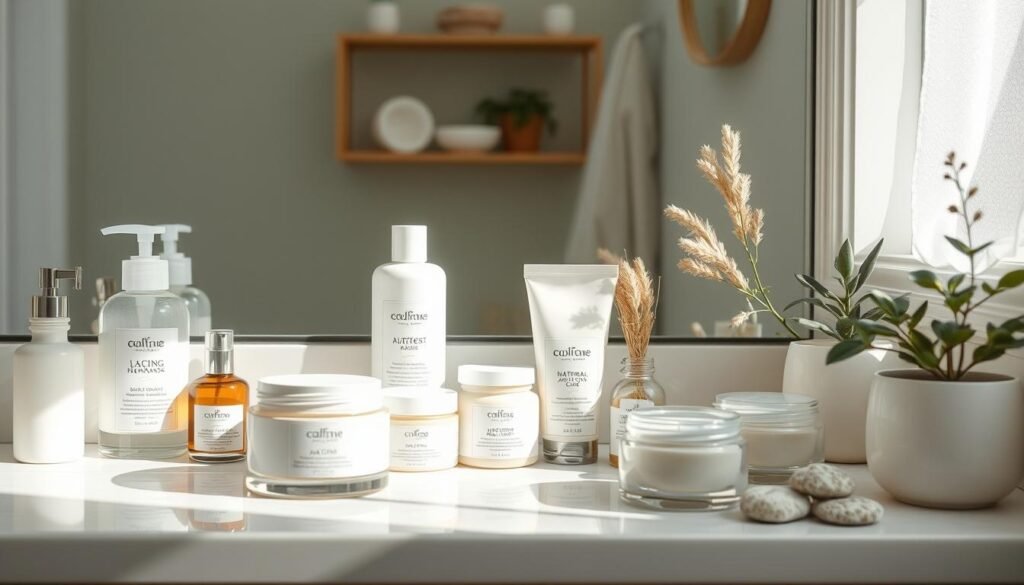
Tea tree oil has antibacterial properties that can fight acne-causing bacteria and reduce swelling. Studies from 2018 showed it can help with acne11. Niacinamide, a vitamin B3 form, can improve skin texture and control oil. A 2020 study found green tea extract can lower sebum and pimples in acne-prone skin11.
For deeper, more stubborn blemishes like blind pimples or cystic acne, microneedle patches may be a better option, as they can deliver active ingredients deeper into the skin for more targeted treatment.
When using these alternatives, keep your skincare simple with 1–2 treatments at a time, Dr. Lee advises12. Use retinoids at night and not with benzoyl peroxide12. Let each product absorb for 30 seconds to a minute before applying the next12.
Zinc has shown to improve acne, with a 2020 meta-analysis finding it reduces inflamed blemishes11. Apple cider vinegar, honey, cinnamon bark extract, and witch hazel also have benefits in fighting acne, studies from 2017 suggest11.
Choosing the Right Acne Treatment for Your Skin
Finding the right acne treatment is key, especially with nearly 85% of teens dealing with it13. There’s no single solution for everyone. Your skin type and acne severity play big roles in what works best13.
Factors to Consider When Selecting Acne Treatments
Think about your skin type and acne severity when picking a treatment. If your skin is sensitive, choose gentle products. Look for ones with niacinamide for less inflammation13.
For oily skin and noninflammatory acne, salicylic acid is a good pick13.
Benzoyl peroxide is great for red bumps with pus. It comes in 2.5% to 10% strength1314. But, start with a lower concentration (around 4%) if your skin is sensitive15.
Remember, finding the right treatment might take some time. Be patient, as it can take up to six weeks for benzoyl peroxide to fully work15.
When to Consult a Dermatologist
If over-the-counter treatments don’t work, see a dermatologist. They can recommend stronger treatments like topical retinoids or oral antibiotics13.
Hormonal acne needs professional help too. A dermatologist can find the cause and create a treatment plan just for you.
Everyone’s skin is different. What works for one might not work for another. If you’re struggling, don’t be afraid to ask for expert advice. With the right treatment and patience, you can get clearer, healthier skin.
Tips for Effective Acne Management
Using the right acne treatments is just the start. A good skincare routine and lifestyle changes can make a big difference. These tips can help you get clearer, healthier-looking skin.
Maintaining a Proper Skincare Routine
Keeping a consistent skincare routine is key for managing acne. Start by washing your face twice a day with a gentle cleanser. This removes dirt and bacteria without drying out your skin. Then, use a light moisturizer to keep your skin hydrated.
Don’t forget to use sunscreen during the day. Some acne treatments can make your skin more sensitive to the sun16.
Choose skincare products made for acne-prone skin. Look for ones with salicylic acid or benzoyl peroxide. These help unclog pores and reduce redness16. Also, consider using acne patches for spot treatments. They can help reduce the size and redness of pimples16.
Lifestyle Changes to Reduce Acne Breakouts
Along with a good skincare routine, making lifestyle changes can help too. Eat a balanced diet with lots of fruits, veggies, and whole grains. Avoid sugary and greasy foods, as they can affect your skin in 70% of cases17. Also, manage stress through deep breathing, meditation, or yoga, as stress can make acne worse.
Another key change is to avoid picking at pimples. It can cause inflammation, scarring, and more breakouts. In fact, stopping skin picking can reduce acne scars by over 95%17. If you find it hard to resist picking, try using acne patches to help17.
| Acne Management Tip | Benefit |
|---|---|
| Gentle cleansing | Removes dirt, oil, and bacteria without irritating skin |
| Non-comedogenic products | Prevents clogged pores and further breakouts |
| Moisturizing | Maintains skin hydration and balance |
| Sun protection | Protects skin from UV damage and sensitivity |
| Balanced diet | Provides essential nutrients for skin health |
| Stress management | Reduces stress-related acne flare-ups |
By following these tips, you can work towards clearer, healthier-looking skin. Remember, consistency is key. Stick to your skincare routine and lifestyle changes, and be patient. It may take several weeks to see improvements17.
Conclusion
In my search for effective acne management, I found that a personalized approach is crucial. Acne patches and benzoyl peroxide can be useful, but they must be used correctly and safely. Pimple patches work best on open, pus-filled pimples, helping them heal and preventing picking18.
Yet, they might not solve the underlying acne issues, like blackheads or cystic acne18. Benzoyl peroxide is strong against acne but can irritate the skin, especially when used with patches. It’s wise to use these treatments alone and get advice from a dermatologist to avoid side effects. A full skincare routine, like Exposed Skin Care, which includes salicylic acid and benzoyl peroxide, might give better results than spot treatments18.
Being consistent is key in managing acne. Stick to a good skincare routine, make lifestyle changes to reduce breakouts, and be patient. Everyone’s skin is different, so what works for one might not work for another. If you’re dealing with persistent or severe acne, don’t hesitate to see a dermatologist. With the right approach and patience, you can find the best treatments for your skin19.
FAQ
Can I use acne patches and benzoyl peroxide together?
How do acne patches work?
What are the benefits of using benzoyl peroxide for acne?
What are some alternatives to using acne patches and benzoyl peroxide together?
How do I choose the right acne treatment for my skin?
What lifestyle changes can help reduce acne breakouts?
Source Links
- What Does a Pimple Patch Actually Do, and Is It Worth the Hype? – https://www.health.com/hydrocolloid-patches-7556580
- Should I Use a Spot Treatment With a Pimple Patch? | Skincare.com powered by L’Oréal – https://www.skincare.com/skin-concerns/acne/spot-treatment-under-pimple-patch
- Understanding Pimple Patches: A Comprehensive Guide | BHSkin – https://bhskin.com/blog/understanding-pimple-patches-a-comprehensive-guide/
- What Are Pimple Patches? Discover How Hydrocolloid Patches Work and Their Benefits – Medtecs Group – https://www.medtecs.com/what-are-acne-patches/
- What Are Hydrocolloid Patches for Pimples? – https://www.webmd.com/skin-problems-and-treatments/acne/what-are-hydrocolloid-patches-for-pimples
- Nonprescription acne treatment: Which products work best? – https://www.mayoclinic.org/diseases-conditions/acne/in-depth/acne-treatments/art-20045814
- Pimple Patches and What They Offer – American Chemical Society – https://www.acs.org/education/chemmatters/articles/pimple-patches-and-what-they-offer.html
- Do Pimple Patches Work? We Asked a Dermatologist – https://www.cnet.com/health/personal-care/do-pimple-patches-work-we-asked-dermatologist/
- The Dos and Don’ts of Using Pimple Patches – https://www.patchology.com/blogs/the-blog/the-dos-and-donts-of-using-pimple-patches?srsltid=AfmBOorW7Clu7Ct4dqmI6cLT2M6l-5LahVoXn4omJPG7QqVAPLBz_EPf
- Everything you need to know about benzoyl peroxide – https://www.harpersbazaar.com/uk/beauty/skincare/a33977796/what-is-benzoyl-peroxide-acne/
- Fight Acne with These Simple At-Home Remedies – https://www.healthline.com/nutrition/13-acne-remedies
- The Right Way to Layer Your Skincare – https://slmdskincare.com/blogs/learn/the-right-way-to-layer-your-skincare?srsltid=AfmBOoqIl8o1kYJLpX-qBC8BHaTA7OF9TMKYqwlqJm9J9aYF_-ir93sK
- Treatments for acne: niacinamide, BHA, hydrocolloid patches and benzoyl peroxide – https://www.nebraskamed.com/dermatology/treatments-for-acne-niacinamide-bha-hydrocolloid-bandages-and-benzoyl-peroxide
- How To Get Rid of a Pimple — Stat! – https://health.clevelandclinic.org/a-dermatologists-advice-on-how-to-get-rid-of-a-pimple
- Benzoyl Peroxide for Acne: How it Works and How to Use It – https://www.healthline.com/health/benzoyl-peroxide-for-acne
- Effective Strategies for Acne Spot Treatment | DCSI South Florida – https://www.mydcsi.com/2024/06/24/strategies-for-acne-spot-treatment/
- Pimple Patches – Dr Davin Lim – https://drdavinlim.com/pimple-patches/
- How Do Acne Patches Work? (And Why It’s Not the Best for Acne) – https://www.exposedskincare.com/blogs/blog/how-do-acne-patches-work
- 6 Reasons Why Pimple Patch for Cystic Acne Is a Bad Idea – https://www.exposedskincare.com/blogs/blog/pimple-patch-for-cystic-acne

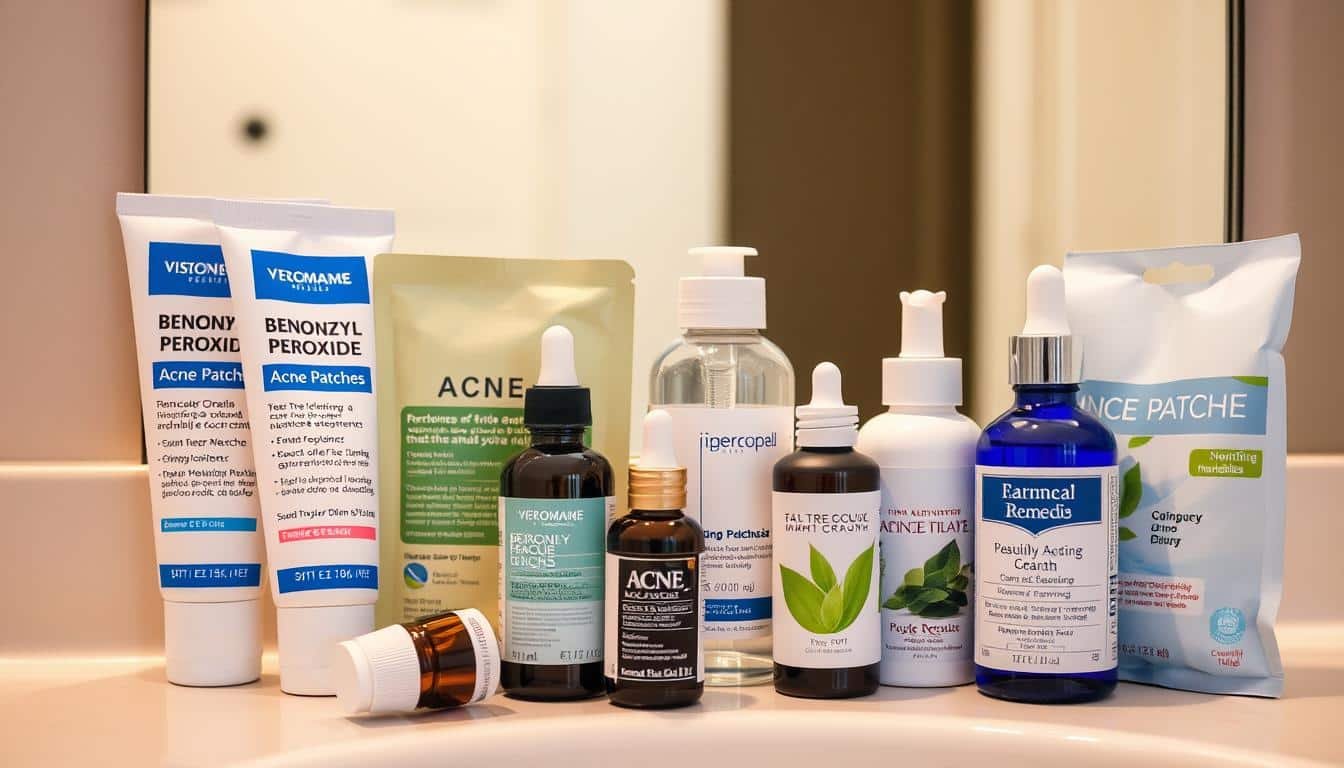
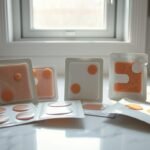
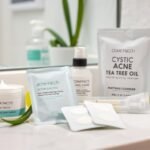
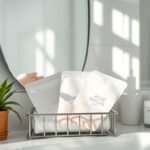
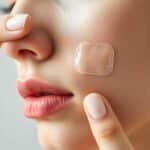
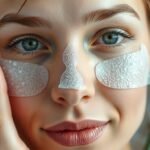
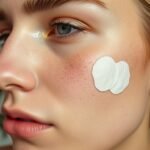
Interesting read, but isnt slapping a patch on top of benzoyl peroxide just doubling up on treatment? Seems a bit overkill, dont you think?
Im not convinced. Do these patches really work better than Benzoyl Peroxide? Sounds like a marketing gimmick. Anyone else skeptical?
Try them before knocking them. They worked wonders for my stubborn acne!
Im no dermatologist, but isnt benzoyl peroxide too harsh to be covered with an acne patch? Just a thought folks!
Interesting read but has anyone ever considered that acne patches may actually worsen acne by trapping bacteria? Just food for thought.
Theres no substantial evidence proving acne patches trap bacteria. Lets stick to facts, not assumptions.
Interesting read, but isnt using both acne patches and benzoyl peroxide a bit overkill? Isnt it better to let skin breathe?
Interesting article, but isnt slapping patches on benzoyl peroxide overkill? Like putting a bandaid on a bandaid, no?
Honestly, wouldnt slapping an acne patch over benzoyl peroxide just dilute its effect? Seems counterproductive to me, just my two cents.
Honestly, wont the Benzoyl Peroxide just eat away at the acne patch? Seems counterproductive to me. Anyone tried this?
Interesting read, but is it overkill to use both? Shouldnt we let our skin breathe instead of bombarding it with products?
Overkill or not, its about personal choice. Bombarding or pampering, you decide your skins fate.
I know its not popular, but I think slapping an acne patch over benzoyl peroxide is overkill. Too much treatment, too soon, anyone?
Interesting read, but isnt slapping an acne patch over benzoyl peroxide like wearing socks over shoes? Seems contradictory, thoughts?
Just read this and Im thinking, isnt slapping a patch on benzoyl peroxide a bit like duct-taping a leaky pipe? Thoughts?
Am I the only one who thinks slapping an acne patch over benzoyl peroxide is just overkill? Isnt it more about diet and hygiene anyway?
Interesting read, but isnt it counterproductive to put a patch over Benzoyl Peroxide? Doesnt it just trap the chemical on the skin?
Interesting article, but anyone else think that using both acne patches and benzoyl peroxide is just overkill? Too much fuss over pimples, no?
Just a thought, but wouldnt slapping an acne patch over Benzoyl Peroxide dilute its power? Isnt that counterproductive?
Interesting article, but arent we just sticking band-aids on a deeper issue? Proper diet and hydration could be more effective, dont you think?
Interesting read, but wouldnt it be overkill to use benzoyl peroxide AND acne patches? Seems like a skin irritation waiting to happen, no?
Interesting read, but isnt it redundant to use both benzoyl peroxide and acne patches? Seems like overkill to me! Thoughts?
Interesting read, but I think the combination might be too harsh on the skin. Anyone else experienced redness or irritation?